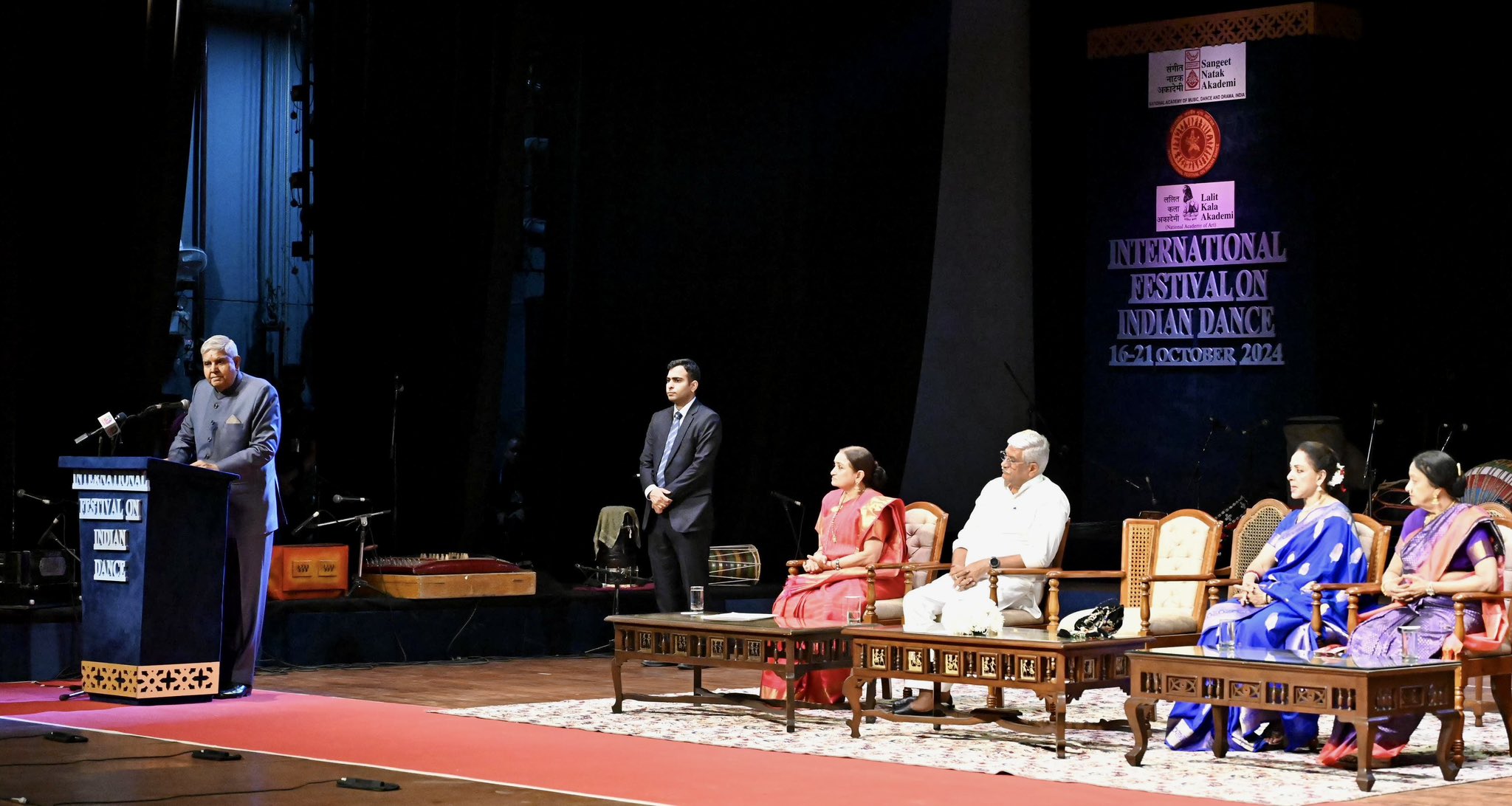Indian art, particularly dance, offers a model of inclusivity in a world increasingly divided by conflicts and discord, said Vice-President of India Jagdeep Dhankhar. He emphasized the power of India’s rich cultural heritage to unite people across boundaries, stating, “In a world grappling with conflicts, transgressions, and discord, Indian art offers a ray of light. When the tunnel is filled with challenges and divisiveness, it is culture, dance, and music that unite us across barriers. Howsoever divisive the world may be, the unity brought about by our culture is impregnable, soothing, and lasting.”
Addressing the gathering at the International Festival on Indian Dance, organized by the Sangeet Natak Akademi in collaboration with the Ministry of Culture and the Indian Council for Cultural Relations (ICCR), the Vice-President said, “Performing arts have the power to unite, heal, inspire, and motivate. Dance artists are cultural and peace ambassadors, promoting dialogue and laying the groundwork for soothing diplomatic maneuvers. Dance is a great facet of cultural diplomacy, fostering understanding and connection across boundaries.”
Dhankhar hailed India’s cultural richness, noting, “Bharat is a gold mine of fine arts. Our cultural revival integrates ancient wisdom with contemporary practices, further cementing India’s image as a cultural powerhouse. The world witnessed this during our G20 Presidency, where our culture was showcased as a feast for the senses. Culture, dance, and music are the universal languages of mankind, understood and appreciated globally.”
The Vice President also emphasized India’s historical influence on global culture, particularly through its epics. “Art does not define dominance; it defines integration. The Ramayana’s spread to Southeast Asia, visible at Angkor Wat, stands as a testament to our cultural diplomacy. When I visited Angkor Wat, I was awestruck by the intricate carvings—it’s as if the stone was speaking. This showcases Indian art’s potential for cultural diplomacy.”
The Vice-President reflected on the challenges faced by India’s artistic traditions during periods of repression in the past. “There was a time in our history, around 400-500 years ago, when music was discarded by the rulers of the time. Our most precious cultural treasures were seen as antithetical to their values. But those who nurtured and furthered dance and music were always held in high esteem.”
Dhankhar highlighted the unique cultural identity of each region in India, stating, “In every part of this great land, from district to district, you will find a distinct cultural identity. Just like ‘One District, One Product,’ we should recognize ‘One District, One Cultural Event,’ emphasizing local traditions of dance, music, and art.”
He emphasized that performing arts not only contribute to India’s global stature but also play a significant role in nurturing the nation’s youth. “Engaging our youth in dance, music, and the arts will help steer them away from harmful habits, like drug use, and immerse them in positive, creative endeavors. The positivity and welfare of humanity nurtured through the arts will contribute to our society’s overall well-being.”
Reflecting on India’s vibrant and diverse cultural traditions, the Vice-President acknowledged that while UNESCO recognizes eight Indian dance forms as intangible cultural heritage, including Kalbeliya, Garba, and Chow, “This is just the beginning. India’s artistic heritage extends far beyond these eight forms. We must work to ensure that our lesser-known dance forms are also preserved and celebrated, preventing their extinction.”
Dhankhar concluded by lauding the recent recognition given to deserving personalities in the field of dance and music over the past decade, stating, “I am delighted that in the last 10 years, the recognition extended to eminent and deserving personalities in the domain of Indian art has been commendable and soothing. This will help us overcome the challenges of day-to-day life and nurture our indomitable spirit.”
He also appreciated the efforts of the Sangeet Natak Akademi, saying, “The Akademi’s consistent work in preserving and promoting our cultural heritage has been invaluable in bringing these traditions to the forefront.”
The Vice-President urged for continued efforts to preserve and nurture India’s cultural heritage, especially its lesser-known dance forms, to ensure they thrive and contribute to the nation’s identity and influence globally.
Gajendra Singh Shekhawat, Union Minister of Culture, actress and politician Hema Malini, Sandhya Purecha, Chairman, Sangeet Natak Akademi, Dr. Padma Subrahmanyam, Padma Vibhushan, and other dignitaries were also present on the occasion.

